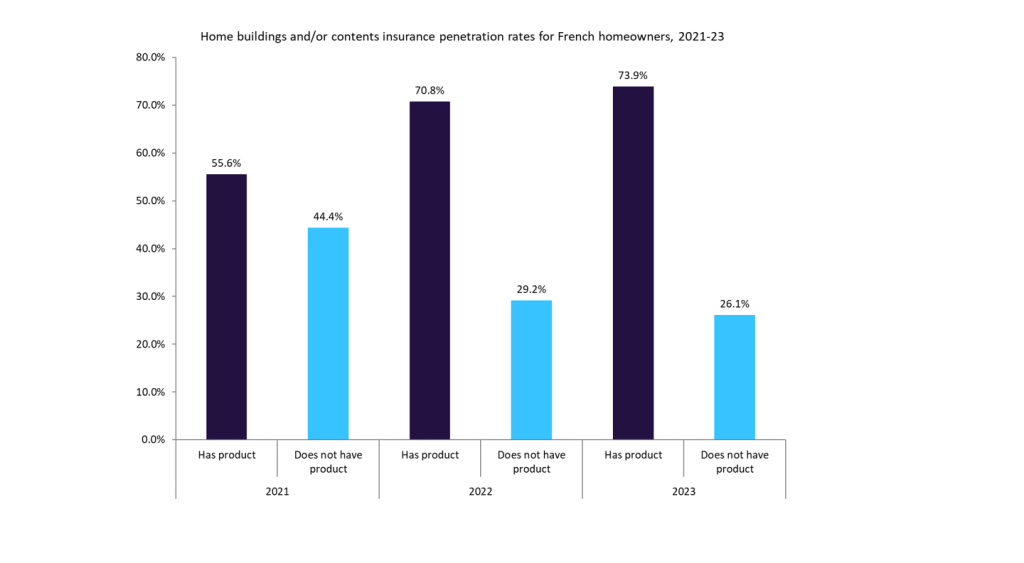US insurers are ‘suffering’ because while
the industry is aware of the regulatory burden it faces,
uncertainty over the rules both domestically and internationally
means it is difficult for providers to plan for growth and
structure their offerings, according to research conducted by
Life Insurance International.
US insurers have
recently been confronted with multiple regulatory reforms including
the Dodd-Frank Wall Street Reform and Consumer Protection Act, the
solvency modernisation initiative and Solvency II.
“Regulatory anticipation
fatigue is a description of the insurance industry’s current
reaction to regulatory reform,” Deloitte’s 2012 Global Insurance
Outlook says.
“The industry is aware
of the impending burden of new regulations, but unable to prepare
definitively for what is often no more than the ghost of
regulations yet to come.”
Since the
McCarran-Ferguson Act of 1945, each of the 50 states, Washington DC
and the five US territories have been responsible for regulating
insurers domiciled in their jurisdiction.
McCarran-Ferguson bars
the US government from overruling state insurance regulations. All
state regulators belong to the National Association of Insurance
Commissioners (NAIC), which establishes regulatory standards, but
lacks enforcement powers.
How well do you really know your competitors?
Access the most comprehensive Company Profiles on the market, powered by GlobalData. Save hours of research. Gain competitive edge.

Thank you!
Your download email will arrive shortly
Not ready to buy yet? Download a free sample
We are confident about the unique quality of our Company Profiles. However, we want you to make the most beneficial decision for your business, so we offer a free sample that you can download by submitting the below form
By GlobalDataSam Stuckal, research
director at CEB TowerGroup’s insurance practice says: “Although
individual states have varying regulations, the NAIC tries to
ensure individual state rules are not impediments to doing
business.”
“State regulators
conduct on-site exams a minimum of every three to five years,” says
NAIC CEO Therese Vaughan.
“They also conduct
off-site reviews. Insurers provide regulators with comprehensive
financial data
every quarter, including
information by line of business and on their investment
portfolios.”
The Financial Industry
Regulatory Authority (FINRA) and the Securities and
Exchange
Commission (SEC) have
jurisdiction over insurance products that are registered
investment
vehicles, such as
variable annuities and variable life products.
“The SEC doesn’t
directly regulate insurers, but insurers are affected by how it
regulates the securities markets,” says Stuckal. “FINRA regulates
and licenses brokers and dealers who sell investment-based
insurance products.”
Dodd-Frank
act
Created following the
2008-2009 financial crisis, the Dodd-Frank Wall Street Reform and
Consumer Protection Act passed into law in 2010. While primarily
intended to regulate the banking industry, it has implications for
insurers.
Firstly, Dodd-Frank
created the Federal Insurance Office (FIO). “Dodd-Frank didn’t
weaken state insurance regulators’ power,” says Howard Mills,
director and chief advisor of Deloitte’s insurance industry group.
“State regulators remain the primary regulators for solvency,
market conduct and customer sales.
The FIO’s director
Michael McRaith says the FIO isn’t a regulator.”
The FIO has caused
uncertainty among insurers, as it’s unclear what the agency’s role
is. “The FIO has a broad mandate, but limited enforcement powers,”
says Mills.
Dodd-Frank mandates the
FIO to become the US voice in international regulatory affairs.
“It’s authorised to speak for the NAIC and state regulators abroad
and sign regulatory treaties with other countries,” says
Mills.
“But it doesn’t have
power of coercion over individual state regulators.” Dodd-Frank
created the Financial Stability Oversight Council (FSOC), which can
determine which banks, insurers and asset managers are systemically
important financial institutions (SIFIs) – and commonly referred to
as “too big to fail”.
“For the first time,
through Dodd-Frank, the US government has the power to deem
insurers are SIFIs,” says Thomas Sullivan, a partner in PwC’s
Financial Services Regulatory Practice.
“Although the US
insurance industry is united in saying that insurers should not be
designated as SIFIs, the expectation is that, for political
reasons, several big insurers will be,” says Mills.
Concern
“The concern is SIFI
designation will add extra regulatory hoops for insurers deemed to
be SIFIs and disadvantage them competitively,” says
Stuckal.
In May, the
International Association of Insurance Supervisors (IAIS) proposed
a methodology for identifying global systemically important
insurers (G-SIIs).
Moody’s Investor Service
senior credit officer Laura Bazer said: “Although we expect very
few insurers to go on G-SII lists, greater regulatory coordination
and monitoring of large, higher-risk international insurance groups
would be credit-positive for the global insurance
industry.”
She expects Prudential
Life, AIG and MetLife to be designated as G-SIIs and
SIFIs.
Mills says if an insurer
owns a bank the state of the insurer’s domicile is its primary
regulator, but, through Dodd-Frank, it also comes under the Federal
Reserve’s scope.
MetLife plans to sell
its bank holding company to avoid coming under Federal Reserve
supervision. “It’s because we don’t believe our insurance business
should be governed by regulations written for banks that we have
decided to sell our depository business,”
William Wheeler,
president of MetLife’s Americas division, told the House of
Representatives’ Financial Institutions and Consumer Credit
Subcommittee in May.
Dodd-Frank gave the FIO
a January 2012 deadline to submit a report to Congress about the
effectiveness of the state regulatory systems.
Report delay
However, the report has
been delayed. “I suspect the report won’t be published until after
the 2012 presidential election, as it will be controversial,” says
Stephen Applebaum, a senior analyst for property and casualty
insurance at Aite Group.
“FIO director McRaith
will probably try to align US regulations with Solvency II to make
it easier for US insurers to do business overseas.
He’ll also press for
insurers to have the option of being regulated at the state level
or federally.”
Being regulated solely
at the federal level would be popular with insurers doing business
throughout the 50 states, says Applebaum.
The vast majority of the
property and casualty insurance market share is held by carriers
that operate nationwide, he notes.
Mills say that under
Dodd-Frank the FIO has the power to require data from insurers
about their sales and customers’ geographical
distribution.
“This is so the FIO can
establish if there are areas of the US where consumers are
underserved or people are over-paying for insurance,” he
says.
Although the FIO has yet
to issue data requests, the insurance industry is concerned.
“Insurers don’t have the infrastructure to comply with such
requests, as they are challenged by legacy systems resulting from
decades of acquisitions,” says Mills.
The problem is that, not
only do state regulators have the power to request data from
insurers, but Dodd-Frank also created an entity called the Office
of Financial Research (OFR).
The OFR has the right to
request data from any financial institution. “Insurers are
concerned it will be expensive to comply with data requests from
the FIO, the OFR and state regulators,” says Mills.
“They’re worried about
the privacy of the data supplied to the FIO and OFR. Insurers have
agreements with state regulators to protect proprietary data they
supply, so it’s not disclosed to competitors.”
Solvency
II
In response to the
European Union’s Solvency II reforms, the NAIC has created the
solvency
modernization initiative
(SMI).
“The SMI’s purpose is to
incorporate the best practices of all the insurance solvency
regulatory regimes around the world,” says James Wrynn, a partner
at US law firm Goldberg Segalla.
The initiative focuses
on issues such as capital requirements, governance and risk
management, group supervision, statutory accounting/financial
reporting and reinsurance.
Wrynn says: “Every day
the decision to grant the US Solvency II equivalence is delayed,
the industry suffers. Insurers and reinsurers are left with
uncertainty as to how to plan their growth and structure their
offerings.”
For two decades,
risk-based capital (RBC) has been a core part of state regulators’
solvency
rules.
The NAIC says RBC will
remain a component within US solvency regulations to maintain a
floor for triggering regulatory intervention. RBC involves weighing
the various risk factors faced by an insurer.
The SMI proposes
revisiting the calculations for life insurance RBC with a
particular focus on asset risk charges.
The initial life
insurance RBC formula was implemented in 1993, and this formula has
undergone several revisions since then, including the introduction
of scenario modelling.
“State regulators
require life insurers to do annual asset adequacy analyses, which
involve stress-testing their future cashflows,” says
Vaughan.
“One scenario requires
them to assume a permanent 3% drop in yields and calculate how this
affects their cashflows.
In 2010, US life
insurers posted an extra $6.5bn to their technical provisions as a
result of these stress tests.”
Within SMI, the NAIC
wants life insurers to move to principle-based technical
provisioning where the insurer’s policy liabilities more accurately
reflect all risks.
“We hope to finalise the
life insurance principle- based methodology by the end of
2012,”
says Vaughan. “Non-life
insurers have historically used principle-based
reserving.”
“Principle-based
reserving is important in life insurance where calculations are
based on
mortality rates,” says
Stuckal.
“If mortality rates
differ from state to state, insurers should reflect this when
entering data into models.”
SMI contains a
requirement for US insurers to file Own Risk and Solvency
Assessments (ORSAs) of the risks threatening their solvency to
their state regulators. Solvency II also includes a requirement for
insurers to file ORSAs.
“From 2014, every state
regulator will require insurers to file ORSA-based
self-assessments,” says Stuckal.
“There’s been a growing
trend towards enterprise risk management (ERM) among US insurers,
which will help them adapt to ORSA, as ORSA is similar to
ERM.”
Another factor helping
US insurers comply with emerging solvency regulations is the
Sarbanes-Oxley Act (SOX) of 2002. SOX requires US publicly-quoted
companies to ensure the accuracy and transparency of information
they give investors.
“SOX forced insurers to
tighten controls on all the underlying processes, such as
accounting
and policy systems and
software development, that support the information
provided
to investors,” says
Stuckal.
Equivalence
Solvency II includes the
concept of equivalence, which establishes regulatory
characteristics non-EU countries must implement for their capital
standards to be deemed “equivalent” to Solvency II.
Where a decision on full
equivalence cannot be supported, the EU allows for a five-year
temporary equivalence, with the possibility of extension for a
further year.
There is a strong
feeling in the US insurance industry that, because US insurers
weathered the 2008-2009 crisis, the US does not need to
substantially upgrade its solvency regulations to achieve
equivalence.
“US regulators and the
European Insurance and Occupational Pensions Authority are having
good discussions to better understand each other’s regulations,”
says Vaughan.
“While the US won’t seek
equivalence status, I’m confident we’ll see a resolution
allowing
US and European insurers
to do business in each other’s jurisdictions.”
“US insurers and
regulators have a good story to tell about how they survived the
2008-2009 crisis,” says Chuck Johnston, director for Americas
Life/Annuity and group practice at Celent.
“The expectation is that
the US will be granted provisional equivalency status for Solvency
II. As the US is the world’s largest insurance market, it’s hard to
see that the US wouldn’t get equivalency status.”
Health
insurance
In June 2012, the
Supreme Court upheld the constitutionality of the Patient
Protection and Affordable Care Act of 2010.
The Act mandates that,
from January 2014, all Americans not covered by employers’ health
insurance programmes or by government- provided schemes must buy
private health insurance, or pay a fine.
Insurers won’t be able
to bar applicants based on pre-existing conditions. Individuals
will be able to buy health insurance direct from insurers or from
the health insurance exchange in their state.
The exchanges, which
take effect in 2014, will act as pools of health insurers providing
coverage eligible for federal subsidies to people on low
incomes.
Already in effect is a
clause which says that, in the case of large group health insurers,
85%
of premium revenue must
be spent on paying for medical services and 15% on
expenses.
For small group and
individual health insurers, 80% must be spent on paying for medical
services and 20% on expenses.
If insurers’ expenses
exceed these thresholds, they are required to pay rebates to their
policyholders.
Despite the Act, US
health insurers are still regulated at the state level.
In September 2011, a
rule within the Act came into effect stipulating that health
insurers wanting to raise their rates by 10% or more must submit a
request to state or federal reviewers who will determine whether
the request is reasonable.
However, the federal
Department of Health and Human Services says states still have the
primary responsibility for reviewing insurance rates.







